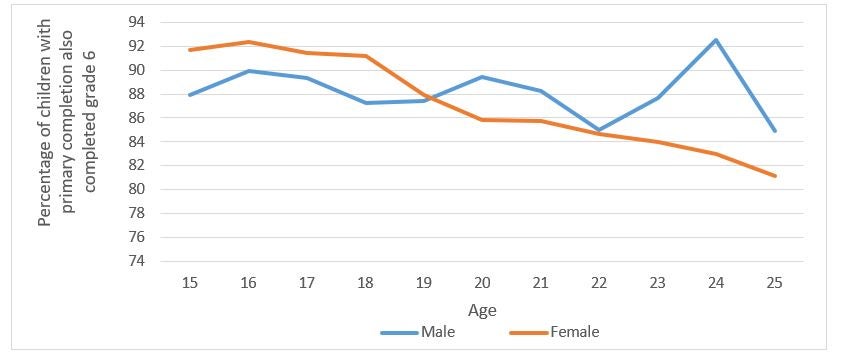 Photo Credit: World Bank
Photo Credit: World Bank
This blog is part of a series that highlights actions and solutions to improve girls’ education in South Asia.
Chief among these achievements is girls’ education, for which Bangladesh now stands as a model.
Such progress is the result of several incentives, especially the Female Secondary School Assistance Project (FSSAP), which was instrumental in achieving gender parity since it started in the early 1990s first as a pilot and then a nationwide program.
FSSAP was part of a coordinated effort to increase girls’ enrolment and retention in secondary schools by providing stipends and tuition waivers. Building on this success, the World Bank introduced a second-generation stipend program for the poorest children that benefited 2.3 million students, of whom 55 percent were girls.
Data from the 2017 Bangladesh Bureau of Educational Information and Statistics show that dropout rates for girls are at a high 42 percent at the secondary school level; completion rates are low, with grade 10 rates bottoming at only 10 percent, and secondary level completion rates reaching a mere 59 percent.
These trends carry through tertiary education, resulting in low female labor force participation.
What explains these high female dropout rates?
Child marriage, household responsibilities, high levels of pregnancies, lack of access to appropriate information about sexual and reproductive health, mental health issues and school-based violence are some of the main factors and contribute to lost years in schooling.
Figure 1 Share of individuals that have at least completed Grade 6 after completing/passing Grade 5 - by gender and age (%)

Ensuring that students complete secondary education is at the core of the 2018 – 2022 Secondary Education Development Program (SEDP), which draws on lessons learned from two decades to improve quality and access to education.
A key feature of the program is the Adolescent Girls’ Program, which aims to improve girls’ retention in secondary schools through a unique collaboration between the Ministry of Education and the Ministry of Health and Family Welfare.
The school-based program will address menstrual management, ensure separate sanitation facilities for girls, and provide female students with cash incentives to attend school.
It will also tackle mental well-being, knowledge about sexual and reproductive health and gender-equitable behavior.
The successful female stipend scheme will be harmonized through a nationwide uniform targeting strategy, which is expected to complement the efforts of Adolescent Girls Program.
The next critical step is to leverage the better-educated female labor force to propel economic and social progress in Bangladesh.
Will the enabling environment endure? Can policy makers, institutions, labor markets, and the overall system come together to garner the potential of women and move the country to upper-middle-income status?




Join the Conversation